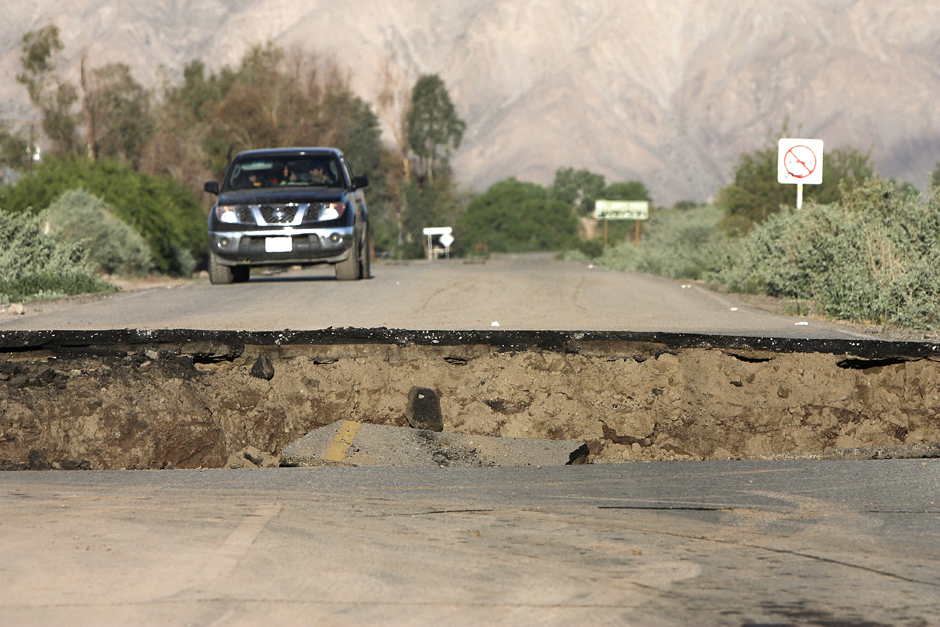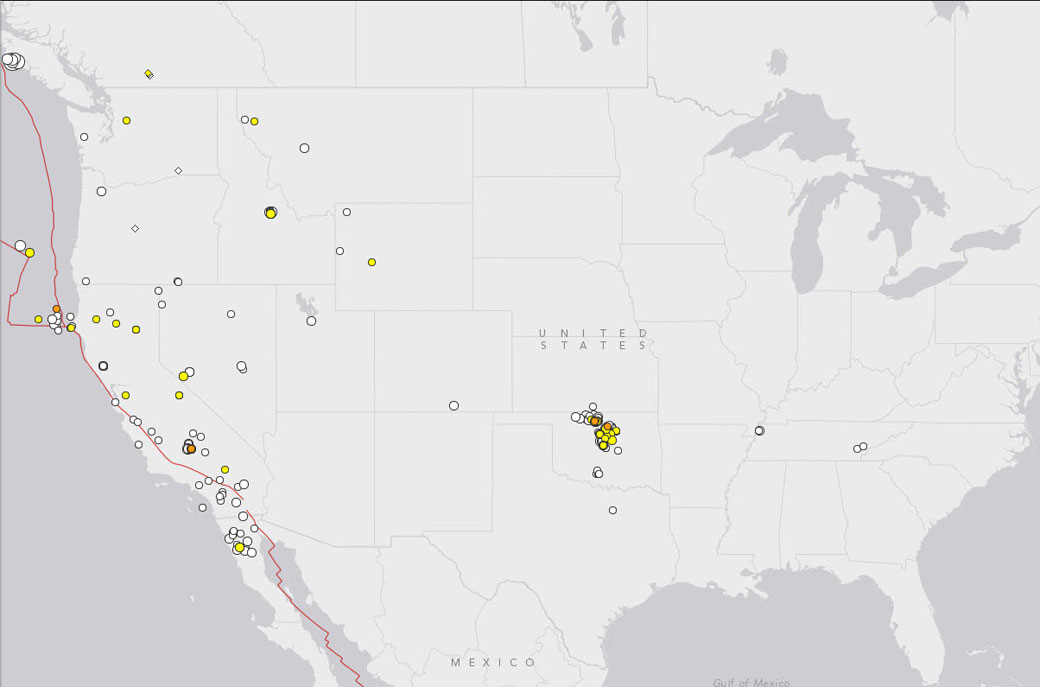TORONTO – When we think about earthquakes in the United States, we usually think of the west coast, in particular, California. When we think about tornadoes, usually it’s Oklahoma that comes to mind. But that’s about to change.

On Monday, the U.S. Geological Survey (USGS) issued a rare earthquake advisory along with the Oklahoma Geological Survey for the state.
The reason? Between October 2013 to April 14 there have been a record 183 earthquakes of magnitude 3.0 or greater. The long-term average, from 1978 to 2008, was just two magnitude-3.0 earthquakes or larger a year.

“We’re concerned about the rate of earthquakes in Oklahoma, and that prompted us to take this action, which is unusual for us to do, especially…east of the Rockies,” Robert Williams, a geophysicist at the USGS, told Global News. But, he cautioned, “There’s a lot of uncertainty. We can’t predict when this will happen, if at all.”
The concern is that a larger earthquake could be on the horizon, and Oklahoma buildings — unlike those in California — wouldn’t be able to withstand it.
“We hope that this new advisory of increased hazard will become a crucial consideration in earthquake preparedness for residents, schools and businesses in the central Oklahoma area,” said Dr. Bill Leith, USGS Senior Science Advisor for Earthquakes and Geologic Hazards in a statement. “Building owners and government officials should have a special concern for older, unreinforced brick structures, which are vulnerable to serious damage during sufficient shaking.”
READ MORE: Stanford researchers use Twitter data to create more accurate earthquake maps
Earthquakes in the state have been so frequent that, at the end of October, the Oklahoma Insurance Commissioner John Doak encouraged Oklahomans to purchase earthquake insurance.
Earth’s crust is constantly moving due to earth’s tectonic plates. There are 15 major plates that move in various ways. When they slip, slide, or collide, they cause earthquakes.
In 2011, a magnitude-5.6 earthquake rocked Prague, Okla. It was felt as far away as Arkansas, Texas, and Ohio and caused extensive damage. The cause, it was later determined, had more to do with human activity than natural ones, in particular fracking.
Fracking is a process where gas is extracted from the ground. A hole is drilled hundreds of meters and filled with water, chemicals, and sand. Though the fracking can cause low seismic activity, it’s not what is causing the increase in earthquakes in Oklahoma. It’s what happens afterwards with the wastewater.
Millions of gallons of water is ultimately discarded and put into wastewater disposal wells.
“It’s those wells that we think are contributing to the problem more significantly than hydraulic fracturing,” said Williams.
“It’s hard to explain the increase [in earthquakes] as being natural,” said Williams.
The problem is that injecting water deep underground can change the stress conditions near a fault. The fluids may also lubricate the faults and lower the friction holding the fault lines together.
Recent research found that wastewater injected into the Prague area triggered a small earthquake near magnitude 5.0, which in turn triggered the more significant and damaging magnitude 5.6 quake.
Geoffrey Abers, Lamont Research Professor at Columbia University, a contributing author on the paper, told Global News that the increase in earthquakes in Oklahoma is far beyond the amount of earthquake swarms — a cluster of earthquakes — seen away from plate boundaries, like in California.
Abers said that it’s not always an instantaneous response: it could take months or even years to see these events.
Though injecting wastewater into wells is fairly common practice some places, such as Pennsylvania, treat the water and reuse it, though there has been some question into how safe the water is.
So where are the fault lines in Oklahoma?
“Unfortunately, we don’t know where all the potentially active faults are,” said Williams. “So that’s a big problem.”
The most danger comes from the construction of homes and buildings in Oklahoma. Many are old historical homes, Williams said, with no steel, meaning that they could not withstand the side-to-side shaking a major earthquake could bring.
As an example, Williams recalled that, following the Prague earthquake, an historical building 18 km away lost a whole turret. The damage was in the millions of dollars.
So is Oklahoma going to be battling tornadoes and major earthquakes?
“In the scheme of things, it’s a pretty low probability, but it’s not zero probability.”




Comments